1. Don’t fix your fridge, just buy a new one
Per Bolund, Sweden’s minister for Consumer Affairs and from the Swedish Green Party, is introducing legislation to give tax breaks to repair white goods to keep them running.
In fact it may be exactly the wrong thing to do. Items like fridges washing machines, air conditioners and TVs take far more energy to run than to make. Upgrading to a new and more efficient machine may be better for the environment than keeping the old one.
A 2006 study concluded that the “optimum replacement cycle” for a fridge ranged from 11 years to as little as two years.
Of course it depends what you replace it with, and what happens to the old one. Decisions, decisions!
2. Rooftop solar installs hit highest monthly level since July, 2015
Australia’s national solar PV market appears to be rebounding after rooftop solar installs hit a multi-year low in December 2015. In September 2016 they reached 66MW for the month, their highest level since July 2015. Here’s the national graph:
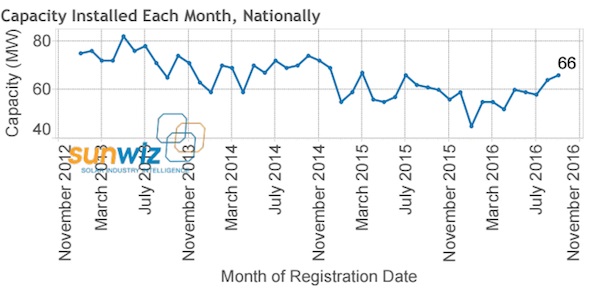
Here’s the story state by state:
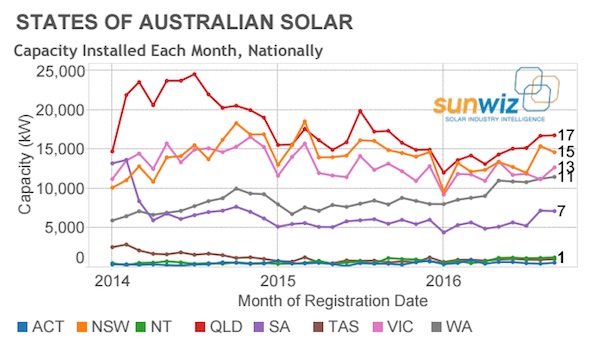
The article emphasises SA, but QLD seems the place to be.
3. Battery storage to the fore as electricity security takes center stage
At the recent COAG meeting after the SA blackout battery storage was seen as playing a significant role in the stability of Australia’s electricity grid.
- Taking questions from the assembled media after the Ministers’ meeting in Melbourne last Friday, Frydenberg said that a CSIRO presentation about battery storage at the meeting “was really exciting” regarding the opportunities such solutions present.
Batteries will be handy for smoothing intermittent supply. In addition we now have to be concerned about “grid frequency regulation”, otherwise known as grid inertia. Batteries are particularly useful because of their almost instant response time.
This chart shows the attractiveness of the Australian market for battery deployment:
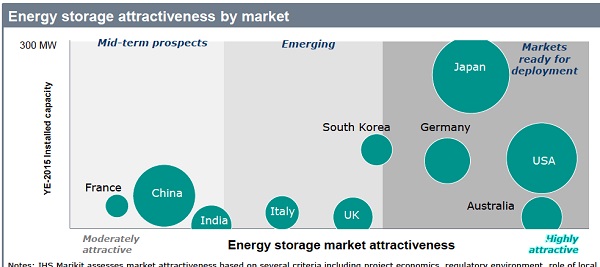
4. Queensland charts three pathways to 50% renewables by 2030
Queensland has just received a report led by Macquarie Group banker Colin Mugglestone which charts three alternative pathways for the state to achieve 50 per cent renewable energy by 2030. Each of them will create jobs, boost the economy, and be “cost neutral” to consumers.
- In a direct smackdown to the “scare-mongering” of the federal Coalition government, the report says adding up to 5,500MW of new large-scale renewable energy capacity will cost one quarter of the amount suggested by federal energy minister Josh Frydenberg, and would have no deleterious impacts on energy reliability.
This graph shows the energy mix expected:
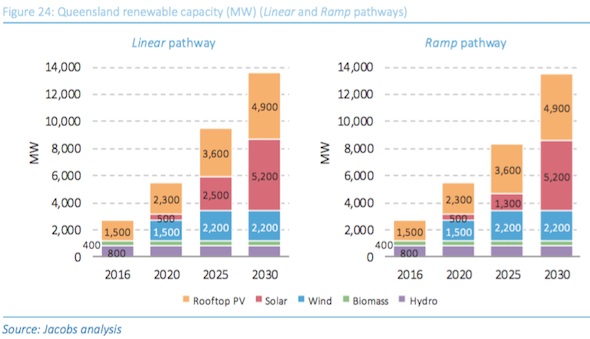
- The report predicts this would add around 6,500 jobs, and add $5 billion in value to the economy (state gross product).
The report also expects another 3,400MW of rooftop solar PV to be added to the existing 1500MW, mostly on industrial and commercial properties without the need for subsidies.
The costs were conservative, based on a 2015 report. The state may use reverse auctions for large-scale projects, as early as next year.
5. Global clean energy investment slumps year-on-year
Global clean energy investment slumped 43% in Q3 year-on-year.
- BNEF warned that all signs pointed to a 23 per cent year-on-year drop in global investments, making it increasingly likely that 2016 would see far less invested than 2015’s record amount of $348.5 billion.
We are not used to seeing graphs like this:
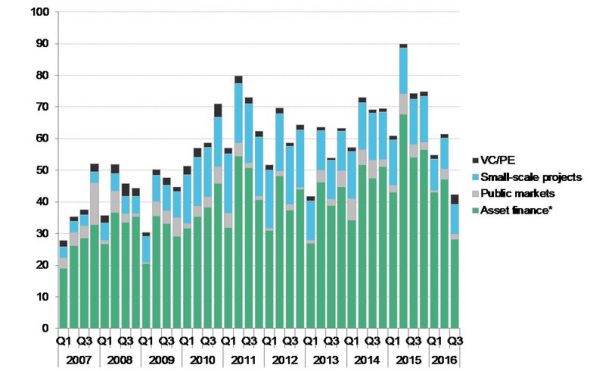
Japan and China have been especially sluggish. Experts don’t know if the market is simply drawing breath after a bumper year, or whether this is the new normal. Just after most have signed the Paris agreement, it’s not a good look.


In the CM this morning they are saying that Qld’s renewable energy push will destroy more jobs in dirty power than it creates in clean.
They are also regretting that old dirty power will lose value. (The loss in value is because clean power will lower the wholesale price of electricity.) Presumably the LNP want to flog it off, as has happened in other states.
More bad news from Bill McKibben.